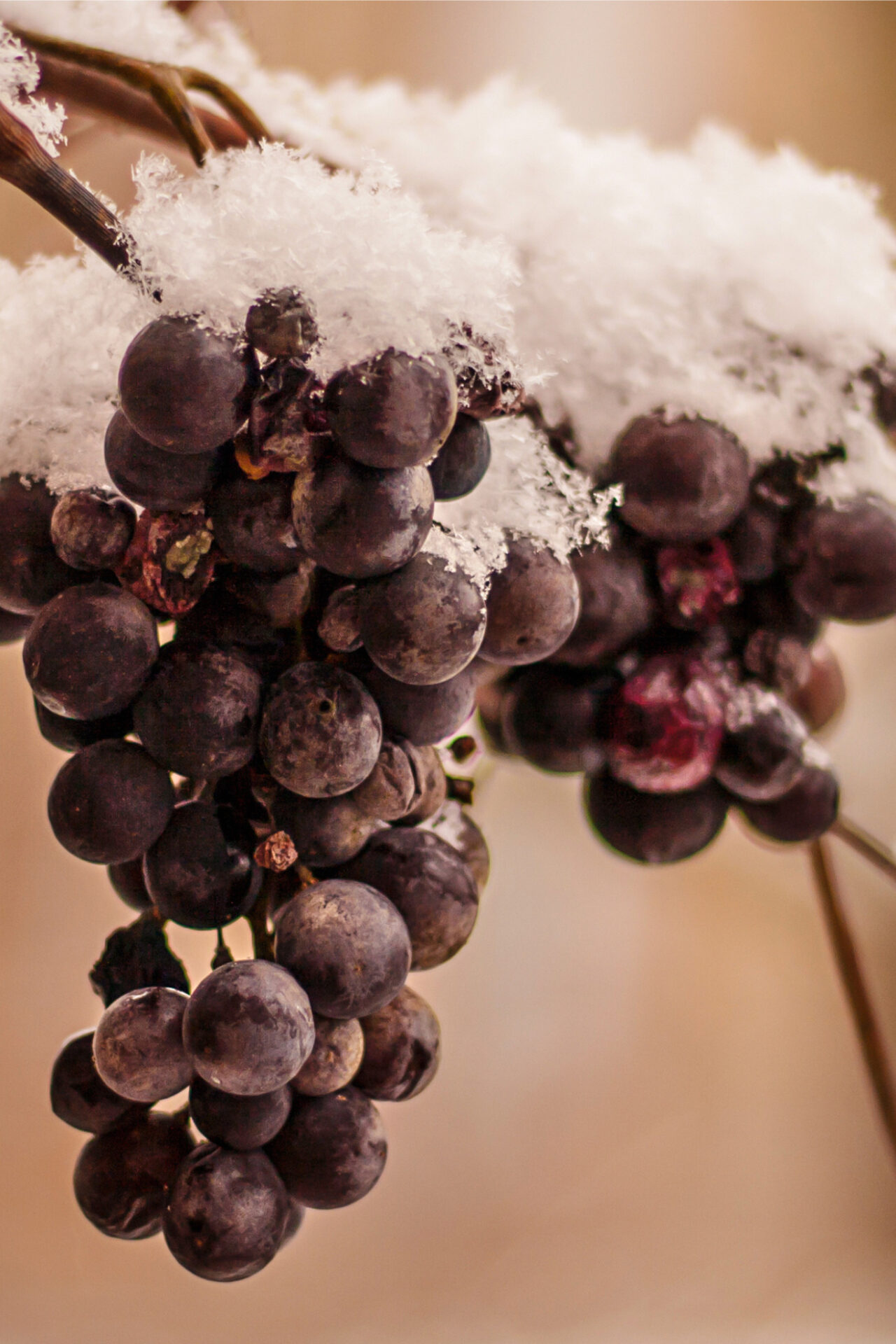
Are you a wine lover constantly on the hunt for something new and special? If so, then you’re in luck because today we’re exploring the fascinating world of ice wine – an intense, sweet dessert wine made from grapes frozen while left on the vine!
This unique process gives ice wine its strong flavors and distinct character that sets it apart from other wines. But beyond just the taste, there’s a science behind why ice wine is created this way and what makes it such a rare treat.
We’ll explore all of this in detail as we dive into everything there is to know about this interesting beverage. So get ready to discover the secrets to making and enjoying delicious ice wines with us!

What is Ice Wine?
Ice wine is one of the most luxurious and decadent wines that can be enjoyed. It is an incredibly sweet, full-bodied dessert-style wine made from frozen grapes harvested during winter months.
Grapes are allowed to freeze on the vines in early winter. The ice-cold temperatures force the water in the grapes to freeze, concentrating the sugars and other components inside of them. The grape’s must (juice) is then pressed from the frozen grapes, resulting in a smaller amount of highly concentrated, very sweet juice.
This process reduces the overall volume of wine but intensifies its flavor and aroma making it a truly unique, exquisite experience.
Of course, ice wine comes with a higher price tag due to the labor-intensive process and quantity of juice produced; however, once you taste its delicious flavors, you’ll realize this sweet wine was worth every penny.
What does Ice Wine Taste Like?
Ice wine is a unique beverage that tastes like nothing else. Its prominent flavor is that of sweet honey on the tongue. As ice wine is made from grapes that are frozen while still on the vine, it is higher in sweetness than table wines due to its intense concentration of natural sugars. Ice wine also has hints of apricot, peach, and citrus notes depending on the varietal being used.
For those looking to sample something truly extraordinary, ice wine certainly fits the bill and makes for an unforgettable experience.
Taste Profile
Dry/Sweet: Sweet (incredibly high sugar content!)
Body: Full
Acidity: Medium-high to high
Age: A couple of years, usually up to 10
Similar to: Tokaji

Ice Wine Food Pairings
Since Ice Wine is high on the sweetness spectrum, I personally love to pair it with a creamy, savory option with enough fat to balance out the acid and flavor profile. My favorite ice wine food pairing? A soft, creamy cheese such as brie (my favorite is Cowgirl Creamery’s Mt. Tam) or camembert. Some people love it with foie gras.
You can also pair ice wine with high-fat, creamy desserts such as cheesecake, ice cream, and fresh fruit panna cotta.
Regions
Growing up in Michigan, ice wine was a style I stumbled on early in my wine journey. It’s typically grown in cooler climates that are likely to get a freeze in early fall.
Ice wine is commonly associated with Germany, where Riesling makes an excellent grape for crafting well-balanced, harmonious wines. Canada is another common producer due to their cool climate.
Typical Grapes
The most commonly used grapes for ice wines include Riesling, Vidal Blanc, and Cabernet Franc. These hardy varieties can withstand the cold temperatures of a late harvest and still create an incredibly smooth and luxurious texture that satisfies discerning palates around the world.
Furthermore, the intense flavor achieved from pressing those frozen grapes makes this one of the most complex styles of wine on shelves today – so it’s no surprise winemakers take such pride in crafting these unique wines!
Many vintners in less-common regions are experimenting with making ice wine from other varieties, such as Seyval Blanc, Chardonnay, Gewurtraminer, Chenin Blanc, or even reds such as Merlot or Pinot Noir.
FAQs
Why is ice wine so expensive?
Because it is produced from grapes frozen on the vine, it produces significantly lower yields and is more labor-intensive for processing. This causes a higher price tag and results in bottles typically being sold in either half-bottle volume (375 mL) or even smaller 200 mL bottles. Its highly concentrated flavors mean you also typically drink less of it at a time as well!
Should ice wine be drunk cold?
Yes! As with most dessert wines, serve it chilled after being in the fridge for a few hours. Need some quick tips on how to chill wine fast? We’ve got a guide!
How long does a bottle of ice wine last after opening?
Like most wines, ice wine is typically best 3-5 days after opening and should be left re-corked in the fridge for optimal storage.
